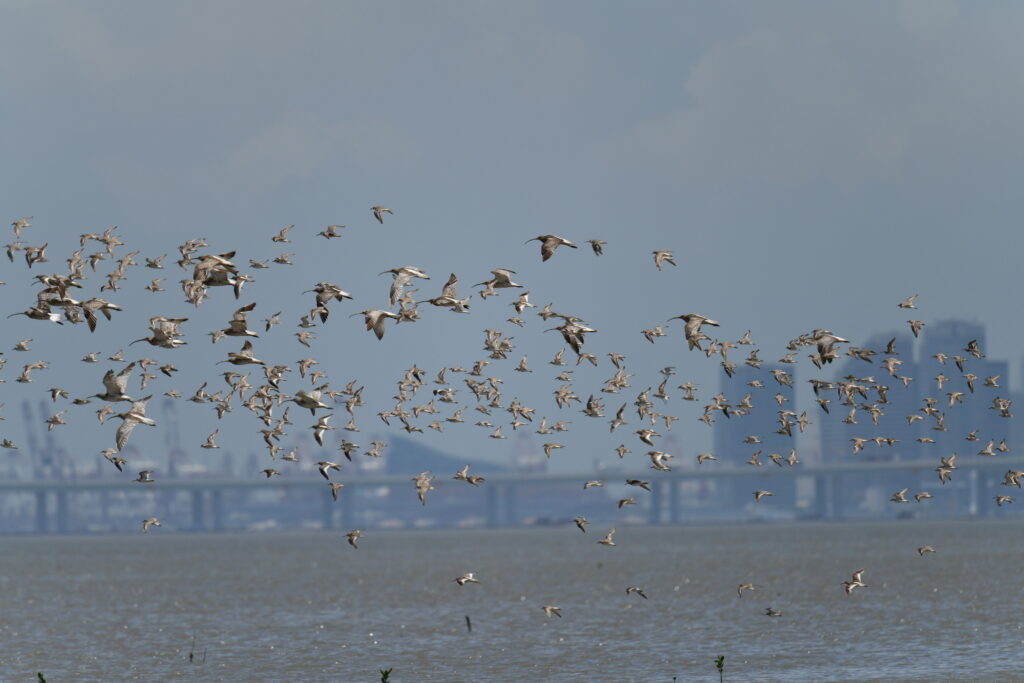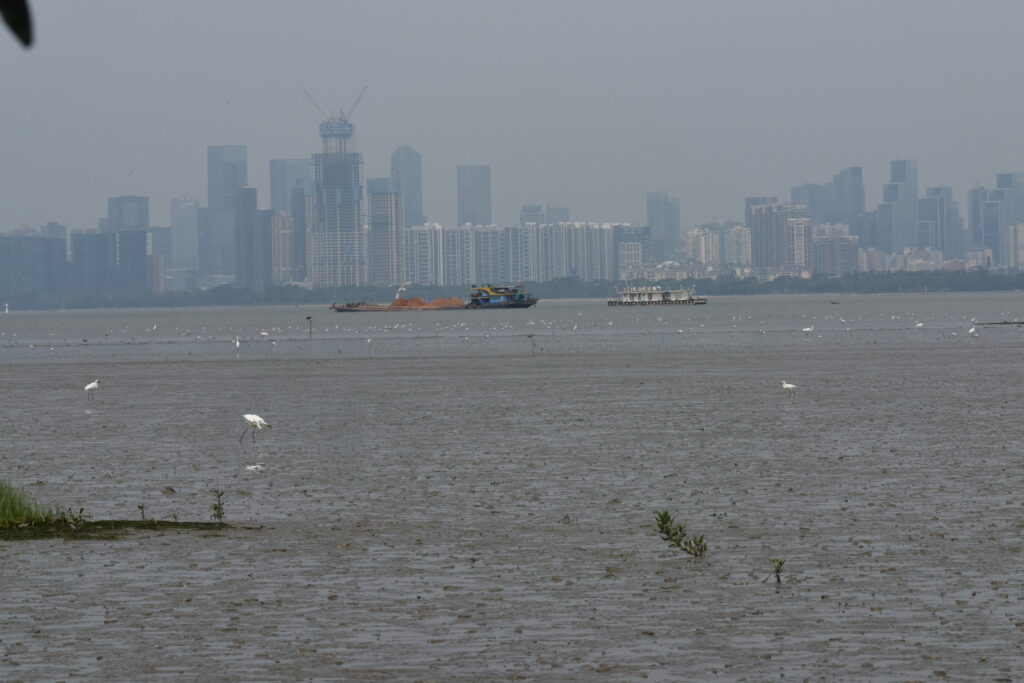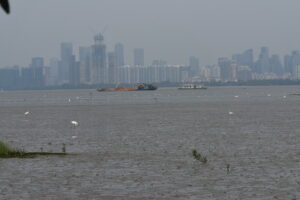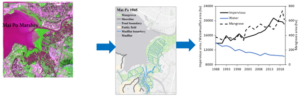CUHK
News Centre
Urbanisation threatens ecological health of Greater Bay Area in South China
Every winter, tens of thousands of migratory birds visit Hong Kong and roost in Deep Bay, in the northwest of Hong Kong, which is one of their feeding stations during their migratory journey. However, a comprehensive joint study on the ecological health of South China’s Greater Bay Area by The Chinese University of Hong Kong (CUHK) and the University of Exeter in the U.K., funded by their joint Environmental Sustainability and Resilience (ENSURE) programme, found that its rapid pace of urbanisation poses a significant threat to the ecological well-being of Deep Bay and its surrounding wetlands.
Led by Professor Joe Lee Shing-yip, Senior Research Fellow (Honorary) and Dr Felix Leung Pui-kin from the Institute of Environment, Energy and Sustainability at CUHK, alongside a team at Exeter led by Professor Brendan Godley, the study focused on Deep Bay, a shallow bay in the Pearl River estuary, which plays a crucial role as a refuelling ground for migratory waterbirds along the East Asian-Australasian Flyway. The team analysed long-term environmental data spanning over 40 years to reveal the alarming consequences of these dramatic landscape-scale changes. The study highlights the urgent need to address the detrimental impact of urbanisation on the region’s fragile coastal wetland ecosystems, especially their vital role in supporting migratory waterbirds.
The study revealed a 30% decline in various water bodies such as mudflats, fishponds and geiwais – traditional intertidal fish and shrimp farms – between 1988 and 2020. These habitats play a crucial role as feeding grounds for migratory waterbirds. Simultaneously, there was a 15.6 km2 increase in impervious surface coverage, primarily due to the conversion of fishponds and wetlands into concrete structures. This change in land use has indirectly impacted the water quality in Deep Bay. The population of wintering waterbirds, as indicated by the Hong Kong Bird Watching Society’s annual monitoring data, has decreased from its peak in 2008 of 90,986 individuals to a recent minimum in 2022 of 48,157 individuals. Some waterbird groups, such as larids (gulls and terns) and railids (rails and coots), have experienced particularly significant declines.
The study established a strong correlation between the population of waterbirds and the biomass of the macrobenthos (animals living in or on the mudflats, such as worms, crabs and mudskippers), which is easily influenced by changes in water quality. It also highlighted significant transformations in water quality and changes in the macrobenthos community that are directly associated with large-scale reclamation projects and the expansion of impervious surfaces. The growth of the mega-city of Shenzhen has been a key driver of these changes, leading to a decline in Deep Bay’s capacity to support migratory waterbird populations.
Dr Leung said, “Our research provides compelling evidence of the adverse effects of urbanisation on the ecological health of the Greater Bay Area. The loss and degradation of wetland habitats, coupled with declining water quality, pose a significant threat to the survival of migratory waterbird populations and the overall biodiversity of the region.”
Dr Leung further emphasised the importance of striking a balance between urban development and environmental conservation. “Deep Bay holds a vital position in supporting migratory waterbird populations along the East Asian-Australasian Flyway. It is imperative for policymakers to give precedence to the protection and sustainable management of Deep Bay. With the development of the Northern Metropolis, it is crucial that we exercise utmost caution when delineating the urban area’s boundary. Our primary objective should be to prevent further fragmentation of the existing wetland habitats while simultaneously providing an ample buffer area for the preservation of their fauna and flora.”
The team suggests strict regulations and guidelines for managing and mitigating the adverse impacts of urbanisation on wetland ecosystems. They also advocate for the adoption of nature-based solutions, using the ecological functions of nature to solve urban problems, such as planting mangroves to filter water quality and protecting wetlands to reduce floods. These sustainable land-use practices can not only preserve wetland habitats but can also protect the environment of the Greater Bay Area. To develop and implement effective conservation strategies, the team highlighted the necessity of collaboration among various stakeholders, including the government, local communities and environmental organisations. In addition, educational campaigns and community engagement initiatives can also raise public awareness of the ecological importance of Deep Bay and the need to protect it. The team envisions that by prioritising the conservation of Deep Bay and other wetlands in the Greater Bay Area, the region can sustain its ecological legacy and its exceptional biodiversity.
Full article of the study: https://www.sciencedirect.com/science/article/abs/pii/S0048969723058588
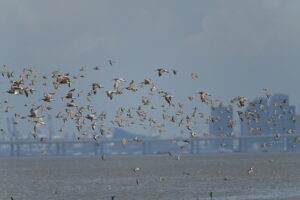
Every winter, tens of thousands of migratory birds visit Hong Kong and roost in Deep Bay, in the northwest of Hong Kong. (Photo: S Y Lee)


